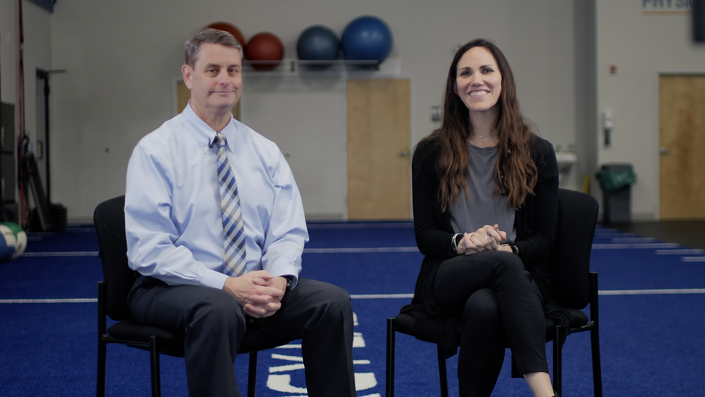Introduction
The Throwing Shoulder Masterclass, taught by Dr Brian Leggin & Dr Brittany Lynch, provides a complete overview of the assessment and management of the Throwing Shoulder. This Executive Summary provides clinically relevant, actionable information that may be useful to health professionals.
Part 1: Biomechanics of Throwing
Throwing is a violent, whole-body activity with the effectiveness of the throw depending on a range of factors. The forces that the shoulder is subjected to during the throwing action are immense, and therefore could lead to injury such as a rotator cuff pathology, internal impingement, SLAP and/or Bennett’s lesions. The 5 phases of throwing include: winding, early cocking, late cocking, acceleration and deceleration/follow through.
- If recording a patient’s throwing motion, ensure to record from multiple angles to comprehensively assess the entire kinetic chain including the shoulder, hip and trunk.
- Often players will have pain during the late cocking phase or the deceleration phase due to inadequate pre-season conditioning or end of season fatigue.
Part 2: Kinetic Chain and Assessment
During the objective assessment of a thrower’s shoulder, use outcome measures, assess the kinetic chain, and evaluate posture, thoracic mobility, pec minor length, range of motion, strength and scapular movement. The body works in a proximal-to-distal sequence, thus the strength through the legs, hips and trunk can affect the velocity of the overall throw. This highlights the importance of looking beyond the shoulder!
- A single leg squat assessment is a good way to assess lumbo-pelvic control.
- Having good sufficient thoracic extension facilitates scapular retraction which is very important during the throwing motion.
- If the total external rotation is not 5 degrees more than the opposite side, the person is 2x more likely to sustain a shoulder or elbow injury.
- Scapular dyskinesis does not increase an athlete’s chance of having a shoulder injury.
Masterclass Preview
Shoulder rehab sounds daunting but it doesn't need to be complicated.
Learn assessment, rehabilitation and injury prevention with Dr Brian Leggin & Dr Brittany Lynch.
Part 3: Early-Stage Rehab
In the early stages, it is important to work with the body’s ability to heal itself. Therefore, rest is needed to facilitate early recovery in the initial phase. There are other treatment modalities including heat, NSAIDs, instrument-assisted mobilisation and/or K-tape. The rehab phase begins in a controlled manner and progressively becomes more challenging with higher loads as the patient’s symptoms settle.
- Stretching into tolerable discomfort 2-3 times a day can help regain range of motion.
- When progressing through rehab, gradually move the shoulder into a more provocative position.
- Asking about the patient’s sleep quality gives a good idea of the irritability of the injury.
- Strengthen the hips and build up the athlete from the basic foundational exercises first.
Part 4: Late-Stage Rehab
In the late stage of rehab, the focus is on connecting all the links of the kinetic chain and rehabilitating them together as one functional unit. This is also a good opportunity to work closely with strength and conditioning coaches to improve the athlete’s overall outcomes when returning to sport. Lastly, it is important to consider the return to sport testing battery.
- The Athletic Shoulder Test (ASH) is a valid and reliable isometric strength test.
- Test for ER/IR strength ratio both at 0 deg and 90 deg abduction and compare that with normative values.



